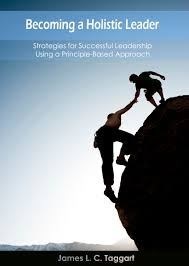The Aspirational Class as Tomorrow’s Leaders

One of Western society’s characteristics is the human propensity for material fulfillment. However, that quest to climb the aspirational ladder has proven to be an exercise loaded with conflicting results: material acquisition accompanied by growing consumer debt levels; a middle class with stagnant incomes; and a disenfranchised, low income stratum of people.
In his book The Affluent Society, Harvard economist John Kenneth Galbraith talked about how the economic growth model of the United States is flawed and no longer useful as the means to lift people out of poverty. Inequality prevails, and indeed the income gap is currently growing between rich and poor. Galbraith’s book was released in 1958. Fast forward to today and his core message is even more relevant.
Yet, the beat goes on as people strive to improve their material well-being and status in society.
Witness the steady increase in middle class people with modest family incomes buying huge, expensive houses (accessorized with quartz counter tops, hardwood floors and high-end cabinets); luxury cars (eg, BMWs, Audis and Porsches) on lengthy instalment plans; vacations to tropical resorts. The list goes on.

Someone who has researched this subject is University of Southern California professor Elizabeth Currid-Halkett. Her new book The Sum of Small Things: A Theory of the Aspirational Class provides an intriguing tour from British economist Thorstein Veblen’s work on conspicuous consumption and what he called The Leisure Class in the late 1800s to today’s growing class divide, fuelled by the Aspirational Class and its efforts to reproduce wealth and upward mobility. She looks at what has changed in the intervening century in society. In particular, greater accessibility to material goods to reflect social status has improved, in turn weakening its power. The consequence is a shift towards more discrete spending that portrays status and knowledge.
It’s important to note that her book is based strictly on U.S. data. However, there are lessons to learn from her analysis and observations. Two broad trends may be distilled from her work. First, conspicuous consumption is declining among the wealthy, now that most of American society is able to do it. Second, what she calls “inconspicuous consumption” is becoming the new conspicuous consumption. Take a moment to read 5 ways to tell if you belong among the new elites.
Currid-Halkett makes a number of astute observations in her book. Here are some samples:
…in the twenty-first century, social status emerges not simply from cards and watches but from inaccessible cues, information, and investments. For the aspirational class these signifiers are… more subtle, less materialistic forms of conveying status, particularly to others in-the-know.
…the lower gradient of the aspirational class [are] hipsters—those young, 20-something-year-old urban denizens working in film or screenwriting or publishing—who barely make enough money to pay the rent, let along attend the parties with the Queen of England or the head of Citibank.…information about what is cool or in the know is all they have and thus they too engage in non pecuniary means of inconspicuous consumption that allows them to define their social position.
Much of aspirational class shared experience is based on information that costs money, even if it is materially invisible.
America’s aspirational class has rejected many of the material means by which status has been historically revealed. They eschewed materialism, aspiring to what they believe is a higher social and cultural platform….this dominant cultural elite prefers to engage in conspicuous production, conspicuous leisure, and inconspicuous consumption, all of which produce much greater class stratification effects than the acquisition of material goods.
As we understand what motivates how and why we consume, we also learn more about humanity, how and where it organizes itself, the implications and limitations to these decisions, and, finally, what matters to us as individuals and society as a whole.

That’s the New York experience, and only a subset of a large country of some 330 million people. However, the findings of Sherman’s research are interesting.
When it comes to those outside of the one percent, Millennials (ages 20-36) face a number of issues. Their plight with job insecurity and absence of pension plans (whether defined benefit or defined contributions) have long-run implications for the economy. Their aspirations to own a home (even just a small garden, starter home) is being shattered by run-away real estate prices. Yet they strive to portray a “cool” factor by being seen in Starbucks and other trendy coffee shops working on their MacBooks.
Hipsters (typically in their twenties and thirties), the target of gentle gibes from social commentators, come in different shapes and sizes: some have the jobs and incomes to live an upscale life while wannabe Hipsters live a pretend affluent existence. At the heart of the aspirational class concept, or what some have called affluenza, is one word: Status. It’s all about people seeking—aspiring—to become something they are not, and perhaps never will be.

For the past several decades, consumer indebtedness, fuelled by insane credit card growth, enticing automotive financing deals (ie, low interest rates and very long payment plans), and extremely low mortgage rates, has reached epic levels. Canadian consumers owed $1.69 of debt for each dollar of their disposable income as of March 31, 2017. A survey done by the Canadian Payroll Association during the summer of 2017 found that 47% of Canadians live paycheque to paycheque, with 35% feeling overwhelmed with their level of indebtedness. One third of the respondents stated that their mortgages are the most difficult to pay down, while one quarter said the same of credit card debt.
Outside of North America, other countries are in on the aspiration-indebtedness game. For example, households in Great Britain owe on average 150% of their incomes, with three quarters of this in the form of mortgages. The financing of motor vehicles has more than doubled in the past four years, and borrowing on credit cards rose 10% in the first half of 2017. Consumers are lured into electronics shops and other retail stores with signs proclaiming 0% free credit with £500 minimum spending.

This is all occurring, to extrapolate from Currid-Halkett’s research findings, in a broader societal shift to a stagnant middle class (declining according to some) and an elite wealthy class that is increasingly disconnected from the rest of society. Witness Sherman’s research on trendy, well-off Millennials. What seems to get lost in this trend by politicians and business leaders is that it’s the middle class that is the source—and indeed engine—of a nation’s innovation capacity. The really rich don’t innovate. Nor do the poor. It’s the middle segment of society where creativity and ideas, based on education and knowledge, are applied to benefit a nation.
It’s a sad commentary that a segment of society, typically well educated, is innovating on ways to separate itself from the rest of society through how it consumes products and services, all in the pursuit of enhancing status and power. The implications for leadership are growing in importance as societal divisions grow and as the labour market begins a post-industrial transformation to increased automation and higher skill sets.
Is the aspirational class ready to lead?
In itself and in its consequences the life of leisure is beautiful and ennobling in all civilised men’s eyes.
—Thorstein Veblen
___________________________________________________________________________________________________

Articles from Jim Taggart
View blog
Franklin Delano Roosevelt rates as being one of America’s greatest presidents, probably in the top t ...

In my last post we looked at The Five Levels of Teams: Where Are You on the Team Performance Curve? ...

Today, we’ll look at the four stages of team development and incorporate the four team player styles ...
You may be interested in these jobs
-

Intermediate Electrical Designer
Found in: beBee S2 CA - 1 week ago
ONEC Group Edmonton, Canada Full timeBuild More Than Just a Career · Our people are our success. They are also adventure-seekers and difference-makers who are committed to a shared vision – to offer the best of the best in project delivery services. When you join ONEC, you join a community that seeks to help you bui ...
-
Cuisinier(ière)
Found in: Talent CA C2 - 6 days ago
OMG Resto Sherbrooke, Canada Temps pleinEn bref · L'OMG Resto est à la recherche d'un cuisinier ou d'une cuisinière pour compléter son équipe. Emploi temps plein, horaire de soir, incluant les fins de semaine, partage du pourboire pouvant aller de 1$ à 3$ de l'heure. Avantages PAL+ et bien plus · OMG Resto, c'est quoi ...
-
Outbound Sales Representative
Found in: beBee S2 CA - 3 weeks ago
The Mobile Shop Peterborough, Canada Full timeThe Mobile Shop Careers - Outbound Sales Representative · What is The Mobile Shop? · Technology is a part of our everyday lives. We at The Mobile Shop connect thousands of Canadians every year with the newest and most innovative phones and plans that the market has to offer. Our ...


Comments